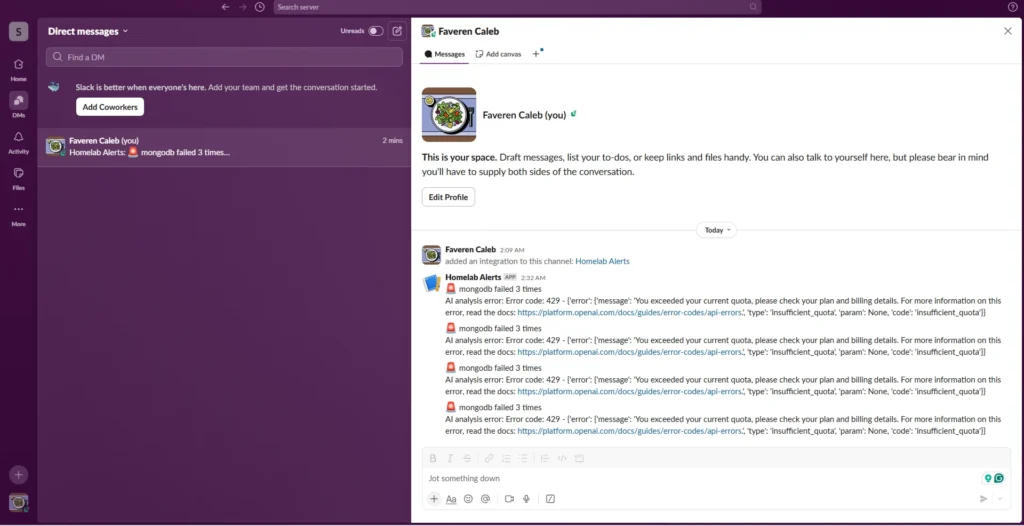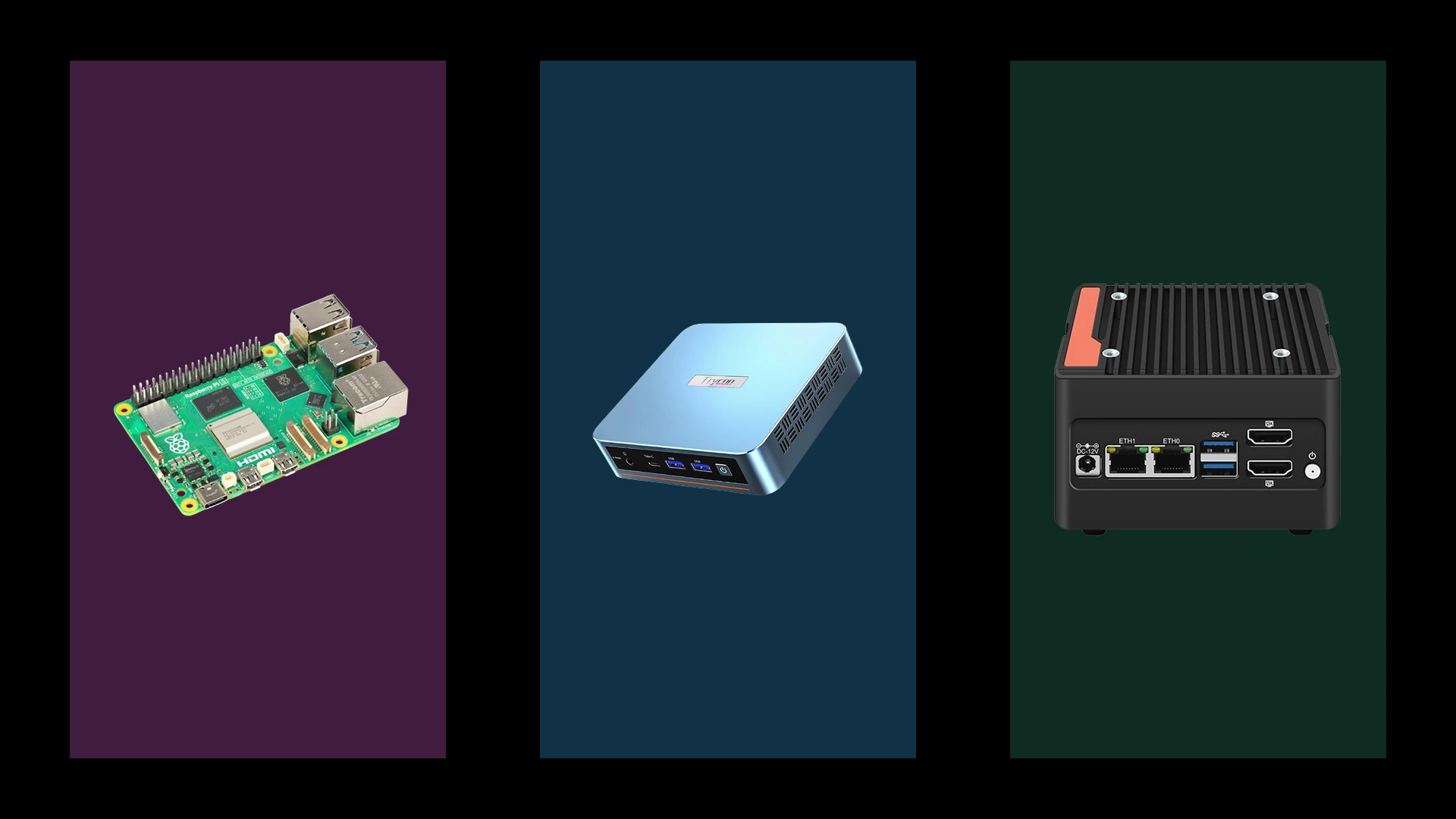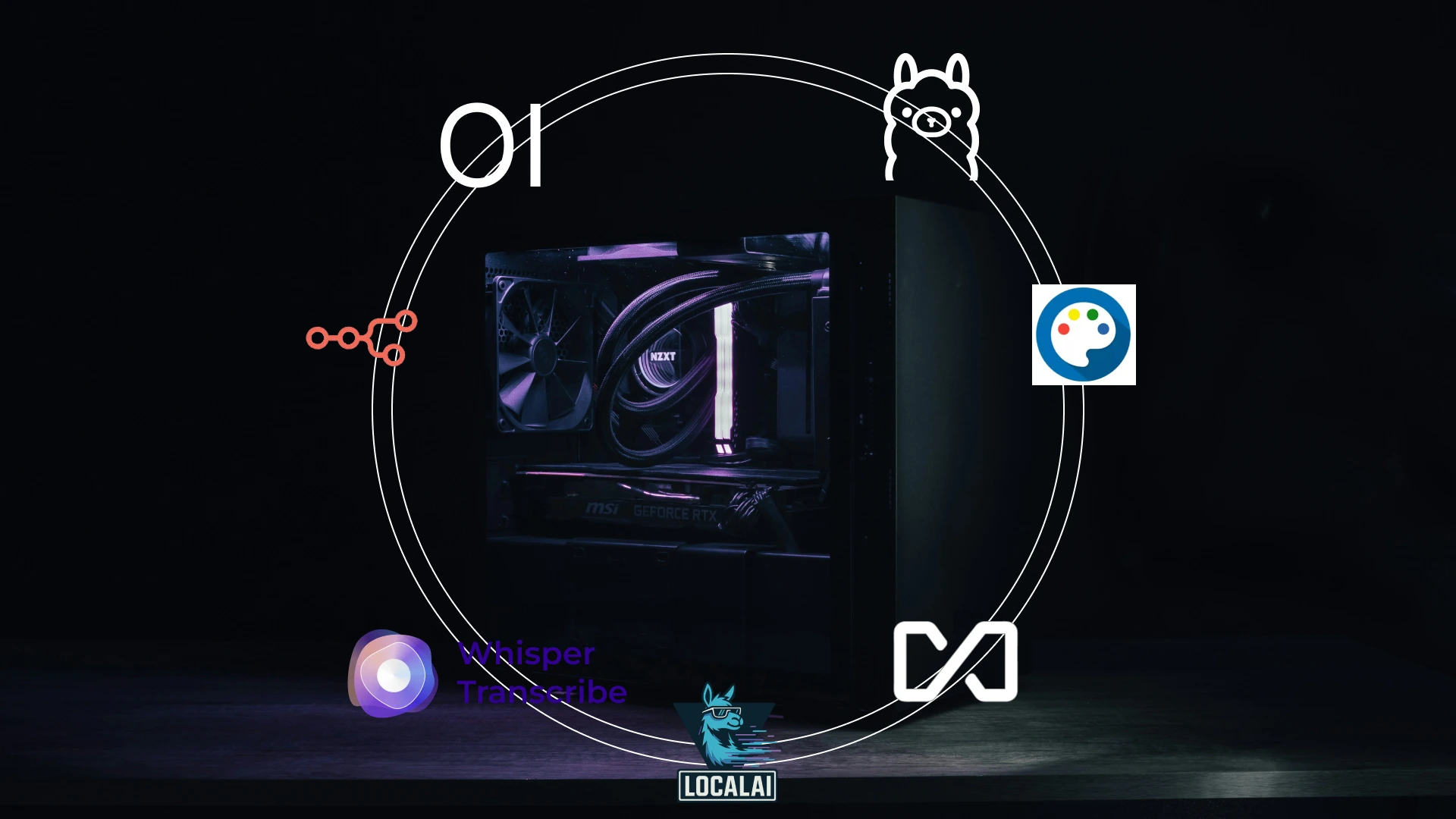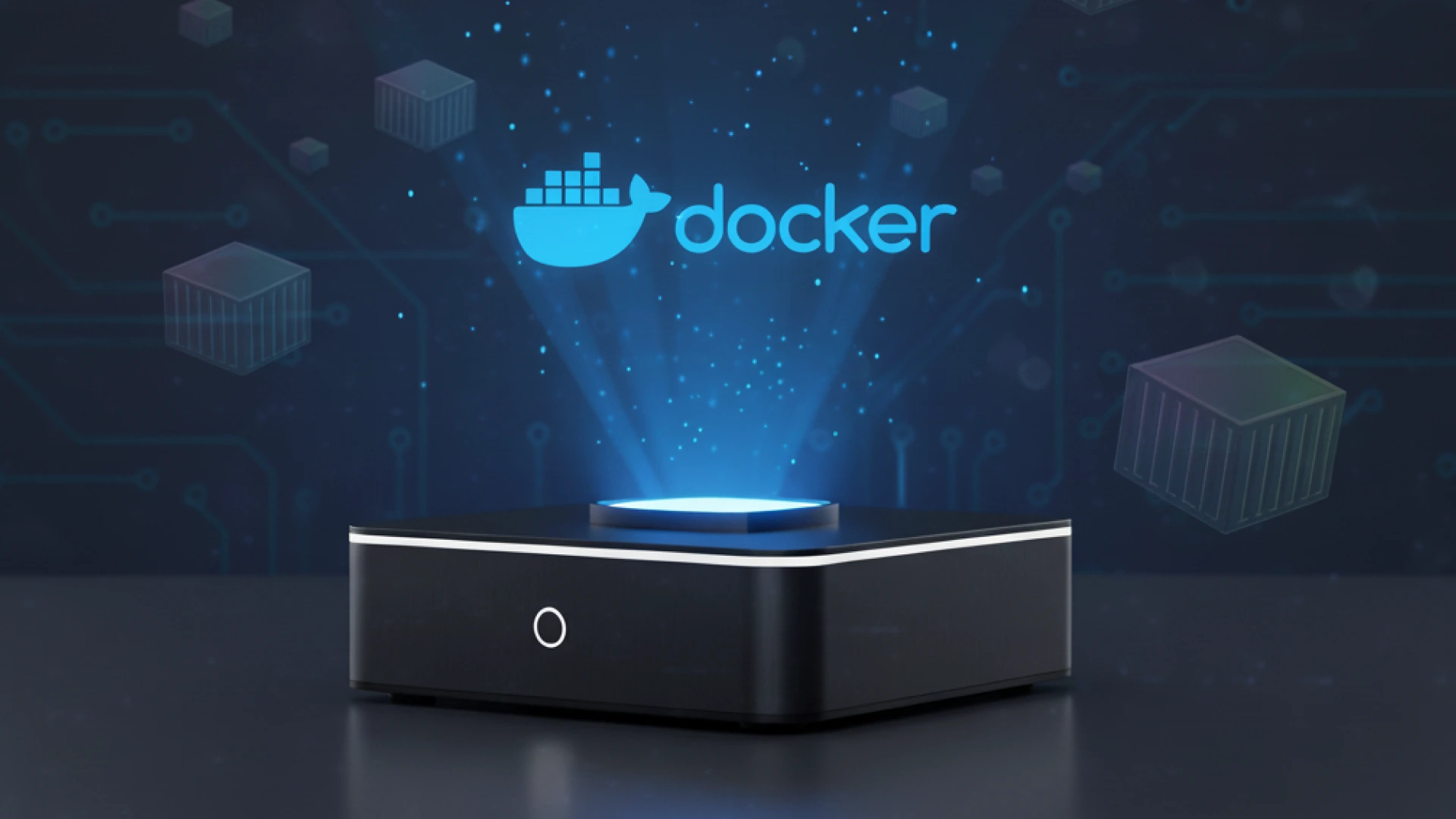I automated my homelab with ChatGPT-5 and reduced my weekly maintenance from 4 hours to 15 minutes. Here’s the exact blueprint.
Running a homelab used to feel like a part-time job. Every week, I’d burn through hours manually monitoring services, debugging broken scripts, updating containers, and drowning in alert fatigue. What should have been a fun learning environment became a grind of 2 AM troubleshooting and inboxes full of failed backup alerts. The more services I added, the more the complexity snowballed until managing my infrastructure felt heavier than my day job.
That’s when I automated my homelab with ChatGPT-5. Instead of spending 15 hours a month babysitting logs and patching fragile automation, I now spend just 15 minutes reviewing dashboards while my AI DevOps assistant handles the rest. ChatGPT-5 doesn’t just suggest fixes, it generates production-ready monitoring scripts, self-healing routines, and optimised workflows in plain English.
Imagine describing a network bottleneck or a flaky container to an AI, and minutes later having robust Python code ready to deploy. No more rabbit holes of script debugging, no more false-positive threshold alerts, and no more “I’ll check it in the morning” service crashes.
In this guide, I’ll walk you through the exact process I used to automate my homelab with ChatGPT-5. You’ll see the real prompts I give it, the actual scripts it generates, and the workflows that now keep my infrastructure humming without constant oversight.
With this, you’ll have a step-by-step blueprint to build your own intelligent, self-maintaining homelab.
The Hidden Cost of Manual Homelab Management
When I first started running my homelab, I thought I was being smart by handling everything manually. In reality, I was wasting 10–15 hours every month on tasks that a computer could do better and faster. Nights and weekends disappeared into a black hole of “just checking logs” or “quickly updating a container.” Before long, my hobby was stealing time from my life.
And here’s the kicker: manual management wasn’t just a time drain, it was an error factory. I’ve lost count of the 3 AM troubleshooting sessions triggered by a single typo in a config file or forgetting to update an SSL certificate. One slip, and I was jolted out of bed to fix something that never should have broken in the first place.
The scaling nightmare was even worse. Initially, five services appeared to be easy to handle. But once I passed twenty, the web of dependencies exploded: backups, monitoring rules, firewall policies, container updates. Every new addition multiplied the complexity until I felt like I was running a second job, not a homelab.
A few painful examples from my setup:
- The Backup Illusion: My NAS said backups were fine until I realised a script had been failing silently for weeks. I only found out when I needed those files.
- Memory Leak Whack-a-Mole: One of my media containers slowly consumed RAM over days. By the time my basic monitoring system detected the issue, the service had already crashed.
- Patch Paralysis: I once delayed updating for weeks because checking 30+ containers manually was exhausting. When I finally updated, half my stack broke.
- Alert Fatigue: I got so many pointless CPU and disk alerts that I started ignoring all notifications up until I missed a real issue.
The real cost of manual management isn’t just the 15 hours a month; it’s the stress, the downtime, and the joy it steals from running a homelab. Looking back, the smarter question was never Can I afford to automate? It was how much longer can I afford not to?
When Passion Projects Become Prison Sentences
After a long day, I finally sat down to relax and stream some media through my Nextcloud setup, only for the server to crash. Again. It wasn’t the first time that week, and deep down I knew it wouldn’t be the last. Instead of unwinding, I was back at the keyboard, digging through logs and juggling containers. That’s when I realised my homelab wasn’t a hobby anymore. It had become a prison I built myself.
The Infrastructure That Owned Me
My setup was a single Ubuntu server overloaded with too many responsibilities. Nextcloud for media and file syncing, Docker containers for various apps, a self-hosted database or two, and a “temporary” backup script I’d been promising to fix for nearly a year. On paper, it looked neat, but in reality, it was fragile, clunky, and constantly demanding attention.
Daily Reality: Death by a Thousand Tasks
Every day starts with checking if everything survived the night. More often than not, something hadn’t. Backup jobs failed silently. SSL certificates expired without warning. Disks crept toward 95% full until I was scrambling to free space. Containers refused to restart cleanly, and my monitoring tools seemed to need as much babysitting as the apps they were supposed to monitor.
The more services I added, the more the complexity became. My homelab wasn’t a playground anymore; it was a second job I never signed up for.
The Inevitable Realisation
That Nextcloud crash was the breaking point. I’d built a system that delivered endless convenience for everyone else, but I’d completely neglected the one user who had to keep it alive: me. I didn’t need another script or dashboard. I needed a jailbreak.
That’s when I knew automation wasn’t optional; it was survival. And the tool that finally set me free was ChatGPT-5.
Blueprint On How I Automated My Homelab With ChatGPT-5
Here’s your step-by-step blueprint to transform your Ubuntu homelab from manual chaos into an intelligent, self-managing infrastructure.
Step 1: Map Your Pain Points (ChatGPT-5 Helps Here Too)
Your Ubuntu server is already running, but ChatGPT-5 can analyse your specific pain points and suggest targeted automation opportunities that match your single-server setup.
Implementation: Ubuntu Homelab Analysis with ChatGPT-5
Open ChatGPT-5 and use this exact prompt tailored to your infrastructure:
Analyze my Ubuntu homelab for automation opportunities:
My setup:
- Single Ubuntu server running multiple services
- Services: Nextcloud for media/file management, Home Assistant, Docker containers
- Test environments and development workloads
- Manual backup processes that need automation
- Current pain points: service monitoring, backup verification, resource management, container restarts
Create a priority matrix for Ubuntu server automation:
1. Time saved per week (hours)
2. Implementation difficulty (1-10)
3. Risk level (low/medium/high)
4. Specific ChatGPT-5 prompts for systemd and Docker integration
Focus on Docker container management, systemd service monitoring, and backup automation.
What you’ll get: A customised automation roadmap for your Ubuntu environment. ChatGPT-5 might suggest starting with Docker health monitoring (high impact, low risk) before tackling your backup automation for Nextcloud data.
Note: I will focus on sharing the scripts that you will use, and will omit some of the prompts I used. For most, this will work for their setup.
Implementation Steps:
- Copy the AI’s Ubuntu-specific recommendations into a spreadsheet
- Start with Docker container monitoring (lowest risk, high visibility)
- Move to systemd service monitoring for critical services
- Tackle backup automation to replace manual processes
- Track time saved and system reliability improvements
Ubuntu Discovery Script Implementation:
Navigate to /tmp and create a new file /setup_homelab_user.sh. Open the editor using
sudo nano /tmp/setup_homelab_user.shCopy and paste the following script into the file editor and save the file.
#!/bin/bash
# Homelab User Setup for Ubuntu 24.04 (Nextcloud/Docker)
# Creates 'homeai' user with controlled access to containers and services
# ==== CONFIGURATION ====
USER="homeai" # Username
HOME_DIR="/opt/homelab-ai" # Home directory
ALLOWED_SERVICES="nextcloud* docker*" # Services user can restart/check
# ==== USER SETUP ====
echo "🛠️ Creating homelab automation user..."
if ! id "$USER" &>/dev/null; then
sudo adduser --system --group --home "$HOME_DIR" "$USER"
echo "✅ User '$USER' created (no login shell)."
else
echo "⚠️ User '$USER' already exists. Skipping creation."
fi
# ==== DOCKER ACCESS ====
if grep -q 'docker' /etc/group; then
sudo usermod -aG docker "$USER"
echo "⚠️ NOTE: '$USER' added to 'docker' group (has root-level container access)."
else
echo "❌ Docker not installed. Install Docker first if needed."
fi
# ==== WORKSPACE SETUP ====
sudo mkdir -p "$HOME_DIR"/{scripts,logs,configs}
sudo chown -R "$USER":"$USER" "$HOME_DIR"
sudo chmod 750 "$HOME_DIR" # User=rwx, Group=r-x, Others=no access
echo "📂 Created secure workspace at $HOME_DIR"
# ==== LIMITED SUDO PERMISSIONS ====
SUDOERS_RULES="$USER ALL=(ALL) NOPASSWD: \
/bin/systemctl status $ALLOWED_SERVICES, \
/bin/systemctl restart $ALLOWED_SERVICES, \
/bin/journalctl -u $ALLOWED_SERVICES"
echo "$SUDOERS_RULES" | sudo tee /etc/sudoers.d/"$USER" >/dev/null
sudo chmod 440 /etc/sudoers.d/"$USER" # Lock down permissions
echo "🔒 Sudo rules set for: $ALLOWED_SERVICES"
# ==== SUMMARY ====
echo "
=== SETUP COMPLETE ===
User: $USER
Home: $HOME_DIR
Allowed Services: $ALLOWED_SERVICES
Docker Access: $(if groups "$USER" | grep -q docker; then echo "YES"; else echo "NO"; fi)
"
Then run the script using the following
sudo bash /tmp/setup_homelab_user.shYou will receive confirmation after the use is created. It will look something like this
seris@serisserver:~$ sudo bash /tmp/setup_homelab_user.sh
🛠️ Creating homelab automation user...
⚠️ User 'homeai' already exists. Skipping creation.
⚠️ NOTE: 'homeai' added to 'docker' group (has root-level container access).
📂 Created secure workspace at /opt/homelab-ai
🔒 Sudo rules set for: nextcloud* docker*
=== SETUP COMPLETE ===
User: homeai
Home: /opt/homelab-ai
Allowed Services: nextcloud* docker*
Docker Access: YESNow, let’s use a Python script to audit the services on my Ubuntu server, Docker containers, and system resources for automation planning.
Let’s install some Python dependencies on our server. Run these commands on your Ubuntu server:
sudo apt install python3-pip python3-docker python3-psutilThis installs essential Python tools for automation (psutil for system monitoring, python3-docker for container management).
Run this to create an empty file:
sudo mkdir -p /opt/homelab-ai/scripts # If not already created
sudo touch /opt/homelab-ai/scripts/ubuntu_audit.py
sudo chown homeai:homeai /opt/homelab-ai/scripts/ubuntu_audit.py # Give ownership to homeaiOpen the file for editing:
sudo nano /opt/homelab-ai/scripts/ubuntu_audit.pyAdd the following Python scripts to Ubuntu_audit.py. The script below is a basic one I use for my server
#!/usr/bin/env python3
import os
import subprocess
from datetime import datetime
# Where to save the report
LOG_DIR = "/opt/homelab-ai/logs"
REPORT = os.path.join(LOG_DIR, "summary.txt")
def run_command(cmd):
"""Run a shell command and return its output."""
try:
result = subprocess.check_output(cmd, shell=True, text=True, stderr=subprocess.PIPE)
return result.strip()
except subprocess.CalledProcessError as e:
return f"ERROR: {e.stderr.strip()}"
def main():
# Create logs directory if missing
os.makedirs(LOG_DIR, exist_ok=True)
# Run security checks
checks = {
"System Updates": "apt list --upgradable",
"Open Ports": "ss -tulnp",
"Docker Containers": "docker ps --format 'table {{.Names}}\t{{.Status}}'",
"Failed Logins": "journalctl -u sshd | grep 'Failed password' | tail -n 5"
}
# Save results
with open(REPORT, "w") as f:
f.write(f"Ubuntu Security Audit - {datetime.now()}\n\n")
for name, cmd in checks.items():
f.write(f"==== {name} ====\n{run_command(cmd)}\n\n")
print(f"✅ Report saved to: {REPORT}")
if __name__ == "__main__":
main()This script checks for available system updates and lists open ports (to detect unexpected services). It shows running Docker containers, logs from recent SSH failed logins and saves results to /opt/homelab-ai/logs/summary.txt.
Execute the code using
sudo chmod +x /opt/homelab-ai/scripts/ubuntu_audit.py # Allow execution
sudo -u homeai python3 /opt/homelab-ai/scripts/ubuntu_audit.py # Run as homeaiView the Results
sudo cat /opt/homelab-ai/logs/summary.txtThe results will be displayed below
How I Structured My ChatGPT-5 Prompts
The key was giving specific context + requirements. Here’s my template:
Create [SCRIPT PURPOSE] for my Ubuntu 24.04 homelab:
CONTEXT:
- Services: Nextcloud, 15 Docker containers, systemd
- Automation user: 'homeai' with limited sudo
- Logs directory: /opt/homelab-ai/logs/
REQUIREMENTS:
- [Specific functionality needed]
- [Check frequency]
- [Error handling rules]
- [Alerting method]
OUTPUT FORMAT:
- Complete Python 3 script
- systemd/cron deployment instructions
- Logging configurationExample: Docker Monitor Prompt
Create a Docker container health monitor that:
- Checks containers every 5 minutes
- Auto-restarts failed containers (max 3 restarts/hour)
- Logs all actions to /opt/homelab-ai/logs/docker_monitor.log
- Sends Slack alerts if a container fails 3+ times
Include:
- Python 3 script
- systemd service/timer setup
- Permission handling for 'homeai' user ChatGPT-5 Generated Scripts
Docker Container Monitor
(Generated from the prompt above)
Run the following
sudp nano /opt/homelab-ai/scripts/docker_monitor.pyCopy and paste the following script into the editor in /docker_monitor.py.
#!/usr/bin/env python3
import subprocess
from datetime import datetime
import requests
LOG_FILE = "/opt/homelab-ai/logs/docker_monitor.log"
SLACK_WEBHOOK = "https://hooks.slack.com/services/YOUR/WEBHOOK"
MAX_RESTARTS = 3
def log(message):
timestamp = datetime.now().strftime("%Y-%m-%d %H:%M:%S")
with open(LOG_FILE, "a") as f:
f.write(f"[{timestamp}] {message}\n")
def slack_alert(message):
requests.post(SLACK_WEBHOOK, json={"text": f"[Homelab] {message}"})
def get_failed_containers():
cmd = "docker ps -a --filter 'status=exited' --filter 'status=dead' --format '{{.Names}}|{{.Status}}'"
result = subprocess.run(cmd, shell=True, capture_output=True, text=True)
return [
name for name, status in
[line.split("|") for line in result.stdout.splitlines() if "|" in line]
if "Exited (0)" not in status
]
def restart_container(name):
log(f"Restarting {name}")
if subprocess.run(f"docker start {name}", shell=True).returncode == 0:
log(f"✅ Success: {name}")
return True
else:
log(f"❌ Failed: {name}")
return False
def main():
failed = get_failed_containers()
if not failed:
log("All containers healthy")
return
for name in failed:
restart_count = len([line for line in open(LOG_FILE) if f"Restarting {name}" in line])
if restart_count < MAX_RESTARTS:
if not restart_container(name):
slack_alert(f"Failed to restart {name}")
elif restart_count == MAX_RESTARTS:
slack_alert(f"Container {name} failed {MAX_RESTARTS} times!")
if __name__ == "__main__":
main()Deployment:
# 1. Install script
sudo curl -o /opt/homelab-ai/scripts/docker_monitor.py https://gist.githubusercontent.com/.../raw/docker_monitor.py
sudo chown -R homeai:homeai /opt/homelab-ai
sudo chmod +x /opt/homelab-ai/scripts/docker_monitor.py
# 2. Create systemd service
sudo tee /etc/systemd/system/docker-monitor.service > /dev/null <<EOF
[Unit]
Description=Docker Container Monitor
After=docker.service
[Service]
Type=oneshot
User=homeai
ExecStart=/usr/bin/python3 /opt/homelab-ai/scripts/docker_monitor.py
WorkingDirectory=/opt/homelab-ai
[Install]
WantedBy=multi-user.target
EOF
# 3. Run every 5 minutes
sudo tee /etc/systemd/system/docker-monitor.timer > /dev/null <<EOF
[Unit]
Description=Run Docker monitor every 5 min
[Timer]
OnCalendar=*:0/5
Persistent=true
[Install]
WantedBy=timers.target
EOF
# 4. Enable
sudo systemctl daemon-reload
sudo systemctl enable --now docker-monitor.timerSmart Alerting with OpenAI
I enhanced the Docker monitor with ChatGPT-5 analysis for better alerts. This keeps Python packages isolated to avoid system conflicts.
Create a Virtual Environment
# Switch to your automation user
sudo -u homeai bash
# Create a venv in the homelab directory
python3 -m venv /opt/homelab-ai/venv
# Activate the venv
source /opt/homelab-ai/venv/bin/activateInstall Required Packages
# Install inside the venv
/opt/homelab-ai/venv/bin/pip install openai requests
# Verify installation
/opt/homelab-ai/venv/bin/python -c "import openai; print(openai.__version__)"Exit the homeai User
# While in the homeai shell (you'll see "homeai@servername"):
exit
# Verify you're back to your admin user:
whoami # Should show your admin usernameCreate the environment file
#grant permission to edit homelab-ai directory
sudo chown -R homeai:homeai /opt/homelab-ai
#Edit the .env to add the api key for better security
sudo -u homeai nano /opt/homelab-ai/config/.envAdd this to the .env file and save. Insert your actual api key where this is “sk-proj-…your-key-here…”. No quote, just your api key. You can get your api key from OpenAI. For the Slack api, you get it from Slack’s website. This is to receive updates in real time on the issues
Note: Using OpenAI’s Api key is optional. I just added it for those with a paid version, but you can skip it and focus on just the alerts you receive on Slack.

Notifications on my Slack account.
OPENAI_API_KEY=sk-proj-...your-key-here...
SLACK_WEBHOOK=https://hooks.slack.com/services/YOUR/WEBHOOKOpen the docker_monitor.py
sudo -u homeai nano /opt/homelab-ai/scripts/docker_monitor.pyErase everything in docker_monitor.py and paste this code there
#!/usr/bin/env python3
import subprocess
from datetime import datetime
import requests
from openai import OpenAI
import os
from pathlib import Path
# Configuration
LOG_FILE = "/opt/homelab-ai/logs/docker_monitor.log"
MAX_RESTARTS = 3
# Load environment
env_path = Path("/opt/homelab-ai/config/.env")
if env_path.exists():
with open(env_path) as f:
for line in f:
if "=" in line and not line.startswith("#"):
key, value = line.strip().split("=", 1)
os.environ[key] = value
# Initialize clients
openai_client = OpenAI(api_key=os.getenv("OPENAI_API_KEY")) if os.getenv("OPENAI_API_KEY") else None
slack_webhook = os.getenv("SLACK_WEBHOOK")
def log(message):
"""Log messages to file"""
timestamp = datetime.now().strftime("%Y-%m-%d %H:%M:%S")
with open(LOG_FILE, "a") as f:
f.write(f"[{timestamp}] {message}\n")
def send_slack_alert(message):
"""Send alerts to Slack"""
if slack_webhook:
try:
requests.post(
slack_webhook,
json={"text": message},
timeout=5
)
except Exception as e:
log(f"⚠️ Slack alert failed: {str(e)}")
def check_available_models():
"""Check which models are available"""
if not openai_client:
return "No OpenAI client"
try:
models = openai_client.models.list()
return [model.id for model in models.data if 'gpt' in model.id.lower()]
except Exception as e:
return f"Error checking models: {str(e)}"
def analyze_failure(container_name):
"""Analyze container failure using AI"""
if not openai_client:
return "AI analysis disabled (no API key)"
try:
logs = subprocess.getoutput(f"docker logs {container_name} --tail 50")
response = openai_client.chat.completions.create(
model="gpt-3.5-turbo",
messages=[{
"role": "user",
"content": f"Analyze this Docker container failure:\n\nContainer: {container_name}\nLogs:\n{logs}\n\nProvide:\n1. Probable cause (1 sentence)\n2. Recommended action"
}],
max_tokens=300
)
return response.choices[0].message.content
except Exception as e:
log(f"⚠️ AI analysis failed: {str(e)}")
return f"AI analysis error: {str(e)}"
def get_failed_containers():
"""Get list of non-running containers"""
cmd = "docker ps -a --filter 'status=exited' --filter 'status=dead' --format '{{.Names}}|{{.Status}}'"
result = subprocess.run(cmd, shell=True, capture_output=True, text=True)
return [
name for name, status in
[line.split("|") for line in result.stdout.splitlines() if "|" in line]
if "Exited (0)" not in status
]
def restart_container(name):
"""Attempt to restart a container"""
log(f"Restarting {name}")
if subprocess.run(f"docker start {name}", shell=True).returncode == 0:
log(f"✅ Success: {name}")
return True
else:
log(f"❌ Failed: {name}")
return False
def main():
"""Main monitoring logic"""
# Ensure log file exists
Path(LOG_FILE).touch(exist_ok=True)
failed = get_failed_containers()
if not failed:
log("All containers healthy")
return
# Initialize restart counts
restart_counts = {}
try:
with open(LOG_FILE) as f:
for line in f:
if "Restarting " in line:
name = line.split("Restarting ")[1].split()[0].strip()
restart_counts[name] = restart_counts.get(name, 0) + 1
except FileNotFoundError:
pass
for name in failed:
current_count = restart_counts.get(name, 0)
if current_count < MAX_RESTARTS:
if not restart_container(name):
send_slack_alert(f"Failed to restart {name}")
elif current_count == MAX_RESTARTS:
analysis = analyze_failure(name)
alert_msg = f"🚨 {name} failed {MAX_RESTARTS} times\n{analysis}"
send_slack_alert(alert_msg)
log(f"Critical failure: {alert_msg}")
if __name__ == "__main__":
main()Set Up Virtual Environment
# As your admin user:
sudo apt install python3-venv # If not already installed
sudo -u homeai python3 -m venv /opt/homelab-ai/venv
sudo -u homeai /opt/homelab-ai/venv/bin/pip install openai requests python-dotenvSecure Permissions
sudo chmod 600 /opt/homelab-ai/config/.env # Restrict access to only homeai
sudo chmod +x /opt/homelab-ai/scripts/docker_monitor.pyCreate the log file and set permissions:
sudo mkdir -p /opt/homelab-ai/logs
sudo touch /opt/homelab-ai/logs/docker_monitor.log
sudo chown -R homeai:homeai /opt/homelab-ai/logs
sudo chmod 664 /opt/homelab-ai/logs/docker_monitor.logEdit your service file:
sudo nano /etc/systemd/system/docker-monitor.serviceUpdate with these exact contents:
[Unit]
Description=Docker Container Monitor
After=docker.service
[Service]
Type=oneshot
User=homeai
Environment="PATH=/opt/homelab-ai/venv/bin:/usr/local/sbin:/usr/local/bin:/usr/sbin:/usr/bin:/sbin:/bin"
ExecStart=/opt/homelab-ai/venv/bin/python /opt/homelab-ai/scripts/docker_monitor.py
WorkingDirectory=/opt/homelab-ai
[Install]
WantedBy=multi-user.targetUpdate dependencies in your virtualenv:
sudo -u homeai /opt/homelab-ai/venv/bin/pip install --upgrade openaiVerify OpenAI version:
sudo -u homeai /opt/homelab-ai/venv/bin/pip show openai
# Should show version >= 1.0.0Enable and Start
sudo systemctl daemon-reload
sudo systemctl enable --now docker-monitor.timer
sudo systemctl start docker-monitor.service # Run immediately for testingIn the following post, I will cover how I made the systems to automatically try to fix issues.
You can also check out our post on Warning: 3 Ubuntu Server 24.04 LTS Secure Settings That Break Your Apps










